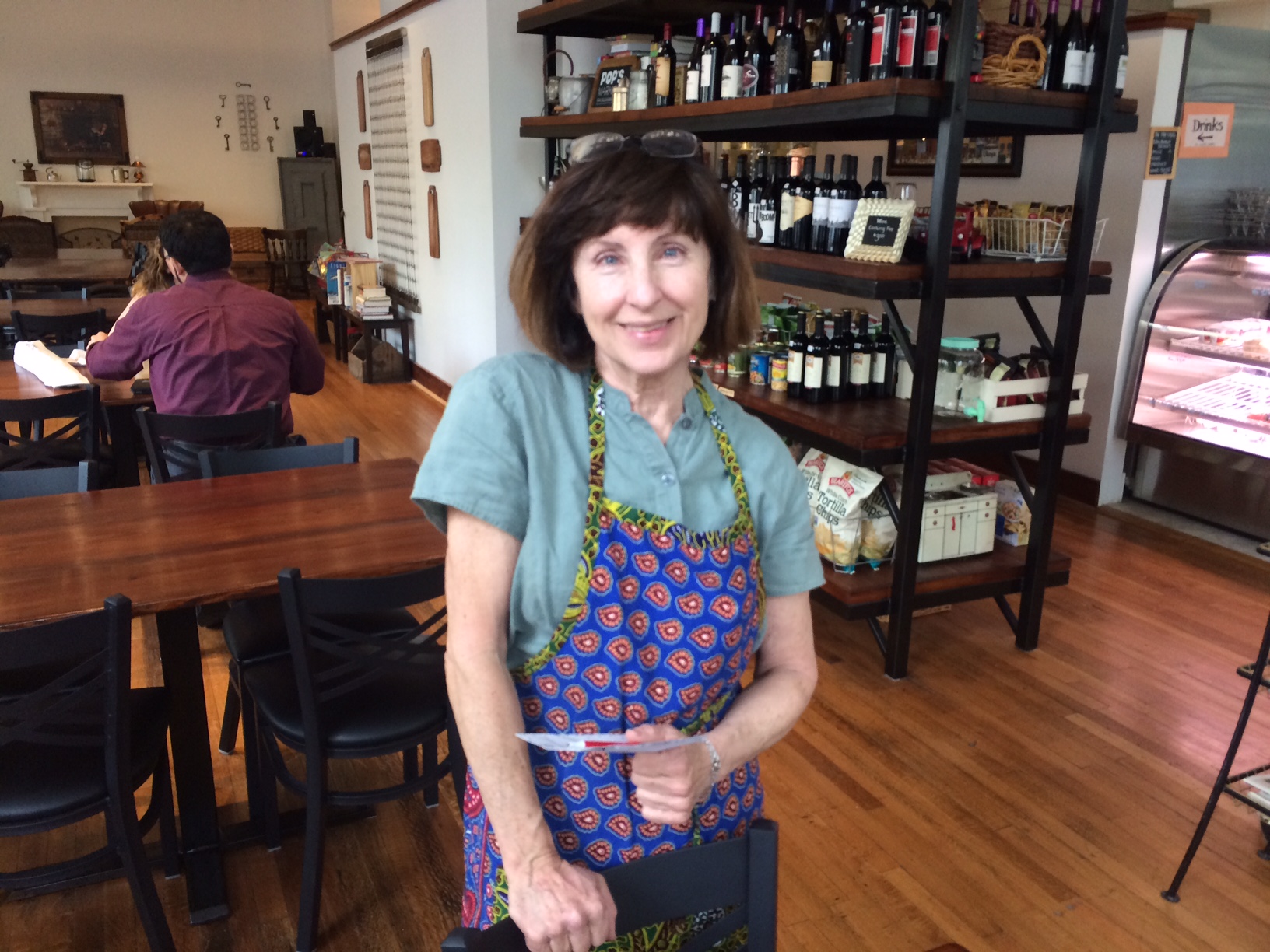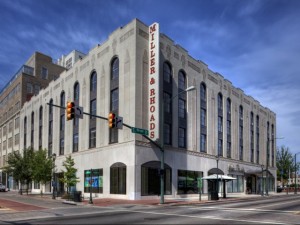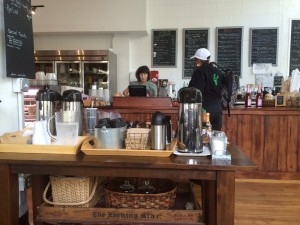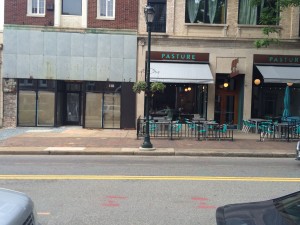 Patti Wright and her son own Pop’s Market on East Grace Street and work to use community strength to drive equitable downtown development. Photo by Will Hogge.
Patti Wright and her son own Pop’s Market on East Grace Street and work to use community strength to drive equitable downtown development. Photo by Will Hogge.
PATTI WRIGHT SMILES as she remembers: It was like yesterday.
“People would line up for hours just for the chance the meet the ‘real’ Santa. He had an earpiece and his Snow Queen would tell him kids’ names. Miller and Rhoads was at the heart of downtown culture then.”
Back then, the iconic retail giant took up a full city block from Broad Street to Grace Street. “The store was part of the community,” says Patti.
Allen Rothert, a long-time events planner, remembers the downtown cornerstone as well. “It was a downtown anchor that was all about family. You could call them up and say you needed them to pick a gift for someone and send it to them. That was it because they already knew you and the person you bought the present for.”

Miller and Rhoads used to be a cornerstone of the thriving downtown culture. Photo Courtesy of Dementi Studios
That was over 50 years ago.
Miller and Rhoads limped through the 1980’s until finally closing its doors for good in 1990. Patti, following the wave of many others living in the city, moved to the suburbs.
Rothert shakes his head thinking about it. “The suburban malls in places like Willow Lawn doomed downtown and the white flight to the suburbs made sure that retailers followed them out of the city.”
The Richmond population shrank steadily through the turn of the century. The 2000 census revealed Richmond’s population to be the lowest since 1942, when World War II was decimating populations everywhere.
Fast forward to today.
Patti sits in a booth at Pop’s Market—a restaurant on Grace Street next door to the old Miller and Rhoads building. She and her son Josh are its owners.
Like many other ‘empty-nesters’ of the baby boomer generation, Patti, 63, came back home. “None of us needed suburban space anymore,” she says, “and everyone felt comfortable coming back because development made the area safer.”
She moved to a fitting location—the recently rebuilt Miller and Rhoads building. The site is now home to a 250-room hotel and 130 condominiums.

Apartments and a hotel now inhabiting the Miller Rhoads Building have brought people back downtown. Photo by Will Hogge
The once vibrant heart of downtown Richmond was on the upswing again. The 2010 census marked the first population growth in Richmond in four decades.
You can hear the excitement in her voice as Patti talks about revitalizing her home. “We wanted to help the neighborhood grow again. We had all these people coming back but nothing was happening in terms of retail. We wanted to help change that.”
Despite nearly $1.15 billion in downtown development investments, it wasn’t easy to get started.
“We couldn’t get a loan from the city or a bank. We used all [of my late husband’s life insurance] money to fund it. We had to take a leap of faith because there’s no investment money for community startup,” Patti says.
Businesses were indeed coming back to meet the population growth, but not the ones that made the Broad and East Grace Street area so special to people like Patti in the past.
“Large or established businesses get all the loans,” explains Patti (interview below). “The fear is that retail here will become a ‘big box’ environment.”
The city is trying to financially meet many pressing issues, says City Councilwoman Kathy Graziano. “Growth comes through development right now with the fastest return, and this means more resources for schools, poverty alleviation and city services down the road.”
Since opening shop, Patti and Josh have indeed seen these benefits. “Restaurants like Pasture, Food Dog and Julep’s gave credibility to Grace Street redevelopment, and we need some of these big stores—everybody is thrilled that Pottery Barn is coming. We are finally in a grown-up, beautiful space again that is walk-able. The community is coming closer together again like it did before as people are meeting and forming these relationships.”
The neighborhood is far from perfect, however. Empty storefronts still line the once mighty Grace and Broad Streets in the neighborhood—a reminder of the work still to be done. But when it comes to community needs, the city is slow to respond.
“The city has to talk about everything for 10 years with community strategies because they don’t see the short-term motivation to invest in us,” says Patti, with a touch of frustration.
Graziano acknowledges the difficulty of this balancing act for the city but stresses the importance of looking at the progress being made.
According to Patti, there is no shortage of community-based startups that can fill the void if given the chance. “Growth is limited because the city plans are not in tune with real needs. The money is here. We just need support.” For now, that support is coming from within the community.
This is what helped Pop’s Market survive its first few years. The concierge from the next-door hotel, the booth operator at the convention center, and front-desk employees around the neighborhood marketed their business for them. This is the strength of a community.

Patti Wright is committed to provide the community with the same support that helped her business get off the ground. Photo by Will Hogge.
“We need to pull each other up,” Patti says, with a broad smile. “Neighbors helping neighbors will help downtown thrive—not the city.”
The community crumbled years ago. Now it is back and as strong as ever. They are slowly becoming unified—for the preservation of their identity and the good of the city as a whole.
As we talk, a young student enters Pop’s Market. Patti knows him by name—Terrence. He lives in the neighborhood and is raising money for a school trip to Washington, D.C.
Patti, of course, welcomes him in.
By Will Hogge

